#certificationTraining
Explore tagged Tumblr posts
Text
No.1 Stock Market Training in Bangalore
Upshot Technologies is a premier stock market training institute in Bangalore, offering comprehensive courses that cover everything from basic concepts to advanced strategies, ensuring a thorough understanding of the stock market for individuals at all skill levels.

0 notes
Text

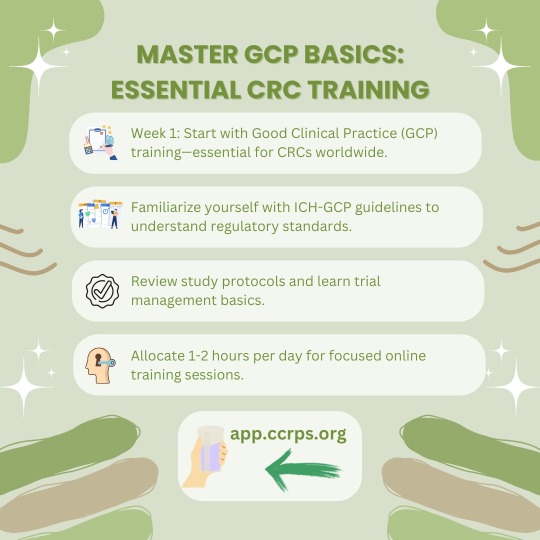
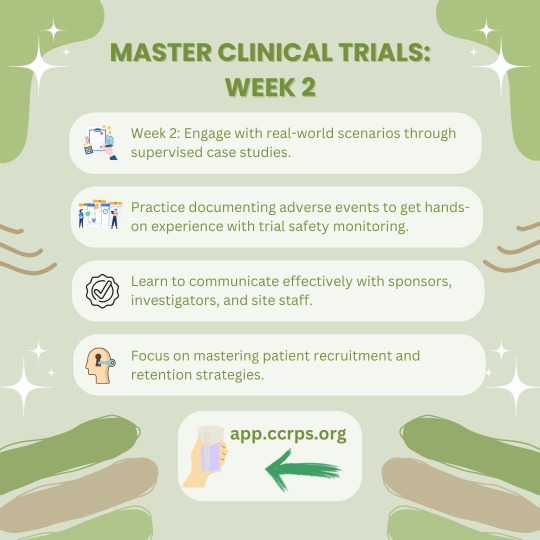
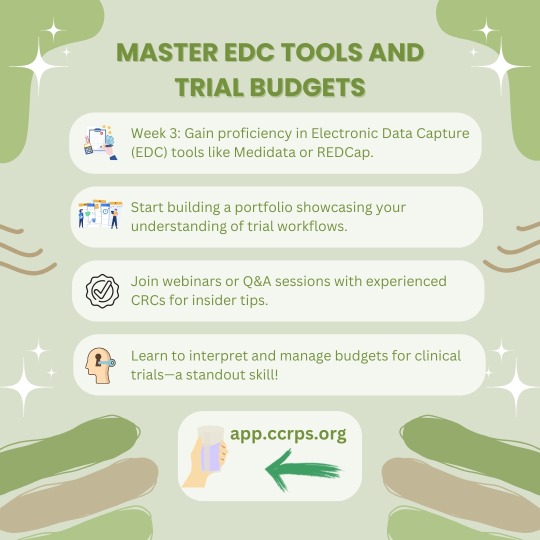






🚀 Boost Your Career Potential with CRC Certification in 4 Weeks 🚀
Are you ready to take your clinical research career to the next level? With the Clinical Research Coordinator (CRC) certification, you can enhance your skills and open doors to exciting job opportunities—all in just 4 weeks!
💼 Why CRC Certification? - 🩺 Gain in-demand expertise in clinical trials, regulations, and best practices. - 🌍 Unlock new career opportunities in the fast-growing field of clinical research. - 📈 Increase your earning potential and expand your professional network.
📅 How It Works 1️⃣ Week 1: Master the basics of clinical research and trial phases. 2️⃣ Week 2: Dive into regulations, compliance, and good clinical practice (GCP). 3️⃣ Week 3: Focus on study protocols, safety, and monitoring. 4️⃣ Week 4: Take practice exams and refine your skills for certification.
🔑 Get Certified, Get Ahead Don’t miss out on this chance to supercharge your career. Start your CRC certification journey today!
🎓 Follow @clinicaltrialresearcher for more tips, resources, and expert advice to help you succeed in the clinical research field!
#clinicalresearchcoordinator#crccertification#clinicalresearchcareers#boostyourcareer#certificationtraining#clinicaltrials#clinicalresearch#researchprofessionals#gcptraining#careergrowth#medicalcertification#clinicalresearchjobs#researchskills#careerdevelopment#professionalgrowth#clinicaltrialresearch#certificationsuccess#jobopportunities#careergoals#clinicalresearchtraining#researchexcellence
1 note
·
View note
Text

🚀 Achieve PMI-ACP® Certification and Lead Agile Transformations!
In today’s dynamic business world, Agile Project Management is key to delivering high-value, client-focused results at speed. 📈 Upgrade My Skill offers a comprehensive PMI-ACP Exam Prep Certification Training to equip you with the expertise to: ✅ Master Agile frameworks like Scrum, Kanban, Lean, XP, and TDD ✅ Manage complex projects confidently in fast-paced environments ✅ Lead Agile transformations and deliver exceptional results
💡 This 21-contact-hour program combines interactive workshops, case studies, and mock exams for real-world readiness.
Whether you're an experienced project manager or transitioning into Agile, this certification unlocks leadership opportunities across IT, healthcare, finance, and more.
📅 Flexible learning options: Classroom & Live Online Training!
🌟 Enroll Now to advance your career in Agile Project Management! : https://www.upgrademyskill.com/pmi-acp-exam-prep-certification-training
#PMIACP#AgileProjectManagement#PMIACPCertification#UpgradeMySkill#AgileTransformation#Scrum#Kanban#Lean#TDD#ProjectManagement#AgileLeadership#CertificationTraining#ProfessionalGrowth#careerdevelopment
1 note
·
View note
Text

"Do you know the key purpose of Azure Monitor? 🤔
Take this quick quiz and test your knowledge about one of Azure's most powerful tools!
Hint: It’s all about keeping your resources in check. 😉 🚀 Master Azure with AzureTrainings.in! 🌐
Looking to advance your career in cloud computing? Join AzureTrainings.in, your one-stop destination for: ✅ Expert-led training on Azure fundamentals & advanced concepts ✅ Hands-on projects and real-world scenarios ✅ Flexible learning schedules tailored for working professionals ✅ Certification guidance to boost your resume
📞 Contact us: +91 98824 98844 ✉️ Email: [email protected] 🌐 Visit: www.azuretrainings.in
💡 Don’t just learn Azure—master it! Start your journey today with AzureTrainings.in!
#AzureTrainings#CloudDataEngineering#AzureMonitor#DataEngineering#AzureDevOps#CloudComputing#TechCareers#ITTraining#SkillUp#MockInterviews#CertificationTraining#HyderabadTech#CareerGrowth#LearnAzure#PlacementSupport#TechEducation#AzureSkills#TechCommunity#ITProfessionals#CloudSkills
0 notes
Text
#ProctorCertification#OnlineProctoring#CareerPath#CanadaCertification#Canada#ProctoringJobs#CertificationTraining#EducationCareer#ExamProctor#OnlineTesting
0 notes
Text

0 notes
Text
How does PgMP certification prepare you for real-world challenges and help you to stay competitive in the job market.
Managing complex programs and navigating real-world challenges would be necessary for success in the fast-paced, ever-evolving business environments of today. The PgMP will be a credential that would arm professionals with the skills and expertise needed to succeed within this challenging environment. The case studies, simulations, and hands-on practical exercises in the case of the PgMP certification course will have a real-life interface with challenges that the practitioner faces when dealing with the environment of program management. In today's organizations, with all the increasing complications of projects and programs, the demand for certified program managers is on increase. Having PgMP certification will open doors to further upscale career opportunities, such as the Program Manager, Portfolio Manager, or Director of Programs, all of which are rather more well-paid and more challenging jobs.
0 notes
Text

Boost your career with SAFe® 6.0 Agilist Certification! Over 50,000 professionals trained by experts with 25+ years of experience. Join Sure Success Academy today!
Get in Touch: +91 7848892373
Visit: https://www.suresuccessacademy.com/
#training#industry experts#SAFeAgilist#AgileTraining#CareerGrowth#Leadership#AgileTransformation#SureSuccessAcademy#Certification#ProjectManagement#AgileHRCertification#AgileProjectManagementCertification#ITTraining#ProjectManagementTraining#AgileCoaching#CertificationTraining#SAFePractitionerCertificationChennai#SAFeLeanPortfolioManagementCertificationChennai
1 note
·
View note
Text
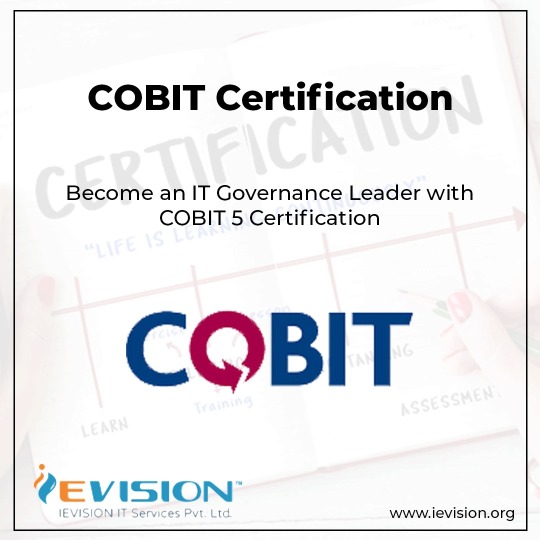
Become an IT Governance Leader with COBIT 5 Certification
COBIT Certification Training: Elevate Your IT Governance Skills
Effective IT governance is crucial for organizational success in today's rapidly evolving digital landscape. COBIT 5, a comprehensive framework for developing, implementing, monitoring, and improving IT governance and management practices, is pivotal for aligning IT with business goals. At iEvision, our COBIT Certification Training is designed to equip you with the skills and knowledge necessary to leverage COBIT 5 and achieve excellence in IT governance.
What Are the Benefits of This Course?
Our COBIT Certification Training offers a myriad of benefits tailored to enhance your expertise in IT governance:
Deep Understanding of COBIT 5: Gain in-depth knowledge of the COBIT 5 framework, including its principles, processes, and best practices for IT governance.
Enhanced Career Prospects: COBIT certifications are highly valued in the IT industry. Certification can open doors to advanced career opportunities and higher earning potential.
Improved IT Governance: Learn how to apply COBIT 5 principles to effectively manage IT resources, mitigate risks, and ensure compliance with regulatory requirements.
Practical Application: Our training is designed with real-world scenarios and case studies, providing you with practical skills that can be immediately applied in your organization.
Why Use COBIT 5?
COBIT 5 is renowned for its ability to help organizations bridge the gap between IT and business objectives. By incorporating COBIT 5 into your IT governance strategy, you can achieve:
Alignment with Business Goals: Ensure IT initiatives support and drive your organization’s strategic objectives.
Efficient Resource Management: Optimize the use of IT resources and reduce operational costs.
Enhanced Risk Management: Identify and address potential IT risks before they impact your business.
Regulatory Compliance: Meet industry standards and regulatory requirements with confidence.
Who Should Attend?
Our COBIT Certification Training is ideal for professionals who are involved in IT governance, management, and operations. This includes:
IT Managers and Directors: Enhance your ability to oversee and manage IT functions effectively.
Governance Professionals: Gain the knowledge needed to implement and sustain governance frameworks.
Auditors and Compliance Officers: Understand how COBIT 5 can help in auditing and ensuring compliance.
Consultants: Expand your expertise to offer more comprehensive IT governance solutions to your clients.
Conclusion
Investing in COBIT Certification Training with iEvision is a strategic move for any IT professional looking to excel in governance and management. With our expert-led courses and practical insights into COBIT 5, you’ll be well-equipped to drive IT excellence in your organization. Join us today and take the next step towards mastering IT governance with COBIT certifications!
#COBIT5#COBITCertification#ITGovernance#ITManagement#CertificationTraining#CareerAdvancement#ProfessionalDevelopment#ITStrategy#GovernanceFramework#ITSkills
0 notes
Text
How to Effectively Leverage JIRA for Project Management Training in 2024?
JIRA, developed by Atlassian, is one of the most powerful and versatile tools available for project management, particularly in Agile environments. Originally designed for software development, JIRA has expanded its capabilities to support a wide range of projects across different industries. Whether you’re managing a small team or overseeing a complex project with multiple stakeholders, effectively leveraging JIRA can significantly enhance your project management processes. Here’s how you can maximize the benefits of JIRA through comprehensive Jira project management training.
Understand the Core Concepts
Before diving into the advanced features of JIRA, it’s crucial to build a strong foundation by understanding its core concepts. JIRA revolves around key elements like projects, issues, boards, and workflows. Projects are the main containers for your work, issues represent tasks or bugs that need to be addressed, boards visualize the progress of work, and workflows define the steps An issue is resolved from beginning to end.
Effective training should start by familiarizing you with these fundamental components. Understanding how they interact will enable you to navigate JIRA with confidence and use it to its full potential.

Customize JIRA to Fit Your Project Needs
One of JIRA’s greatest strengths is its flexibility. It can be customized to fit the unique needs of your projects and teams. During your training, focus on learning how to tailor JIRA’s settings to match your specific workflows and processes.
You can customize workflows to reflect the steps your team takes to complete tasks, create custom issue types to categorize work more effectively, and set up personalized dashboards that give you a real-time overview of your project’s status. By customizing JIRA, you ensure that the tool aligns with your team’s way of working, which can lead to greater efficiency and better project outcomes.
Leverage Agile Boards
JIRA is particularly well-suited for Agile project management, offering both Scrum and Kanban boards to help teams visualize their work and manage projects in an Agile manner. Teams that operate in sprints would benefit from Scrum boards, whereas teams that prioritize continuous delivery would benefit from Kanban boards.
Training should include hands-on experience with setting up and managing these boards. Learn how to create sprints, manage backlogs, prioritize tasks, and track progress. Understanding how to effectively use Agile boards in JIRA will help you improve your team’s workflow, enhance collaboration, and ensure that projects are delivered on time.
Utilize JIRA’s Reporting and Analytics Tools
Effective project management relies heavily on data-driven decisions. JIRA offers robust reporting and analytics tools that allow you to track your project’s progress, identify bottlenecks, and measure team performance. Training should cover how to generate and interpret reports like burndown charts, velocity charts, and cumulative flow diagrams.
These tools provide valuable insights into how your project is progressing and where improvements can be made. By leveraging JIRA’s reporting features, you can make informed decisions that keep your projects on track and ensure that your team is performing at its best.
Automate Repetitive Tasks
Automation is a key feature in JIRA that can save you and your team a significant amount of time. Through training, you should learn how to set up automation rules that handle repetitive tasks, such as moving issues through workflows, assigning tasks, or sending notifications when certain conditions are met.
Automation not only reduces the manual effort required to manage projects but also minimizes the risk of errors. By automating routine tasks, your team can focus more on value-added activities, which can lead to higher productivity and better project outcomes.
Integrate JIRA with Other Tools
JIRA’s ability to integrate with a wide range of other tools is another reason it’s so effective for project management. Whether it’s linking with Confluence for documentation, integrating with Bitbucket or GitHub for code management, or connecting with Slack for communication, these integrations can streamline your workflow and enhance collaboration.
Training should include how to set up and manage these integrations, ensuring that all your project management tools work together seamlessly. This interconnectedness can significantly boost your team’s efficiency by reducing the need to switch between different platforms and ensuring that all project-related information is easily accessible.
Encourage Continuous Learning and Feedback
Finally, it’s important to recognize that mastering JIRA is an ongoing process. Encourage continuous learning by keeping up with the latest updates and features that Atlassian introduces to JIRA. Additionally, seek feedback from your team on how JIRA is working for them and where improvements can be made.
By fostering a culture of continuous improvement, you can ensure that your team remains effective in leveraging JIRA for project management and continues to deliver high-quality results.
Conclusion
Effectively leveraging JIRA for project management requires a solid understanding of its core features, the ability to customize it to your team’s needs, and the use of its powerful Agile boards, reporting tools, automation features, and integrations. Through comprehensive training, you can master these aspects of JIRA and use it to streamline your project management processes, enhance collaboration, and deliver successful projects. By committing to continuous learning and improvement, you’ll be well-equipped to maximize the benefits that JIRA offers for managing projects of any size or complexity.
0 notes
Text

#rite academy#rite academy in hyderabad#mep#best mep#riteacademytraininginstitute#certificationtraining#traininganddevelopment
0 notes
Text

🚀 Boost Your Career with Agile Scrum Foundation Certification Training! 🚀
Are you a software developer, project manager, or IT professional looking to enhance your skills in Agile project management and Scrum frameworks? Upgrade My Skill's Agile Scrum Foundation Certification Training is your perfect gateway to understanding Agile principles and Scrum practices.
📚 What You'll Learn:
Key concepts of Agile methodologies. Scrum roles, events, and artifacts. Agile planning, estimating, and continuous improvement techniques. Practical applications of Agile tools and best practices. This entry-level course is designed to prepare you for the Agile Scrum Foundation (ASF) Certification Exam. Delivered in both classroom and live online modes, it's accessible to professionals worldwide.
✅ Why Get Certified?
Increase Career Opportunities: Stand out with a globally recognized credential. Boost Earning Potential: Agile expertise is in high demand across industries. Lead Successful Projects: Master the tools and techniques to drive iterative progress and enhance team performance. Get ready to elevate your career and become an Agile expert with Upgrade My Skill!
👉 Enroll Now: https://www.upgrademyskill.com/agile-scrum-foundation-certification-training
#AgileScrum#ScrumCertification#ProjectManagement#UpgradeYourSkills#AgileTraining#careerdevelopment#AgileMethodology#ScrumMaster#AgileProjectManagement#AgileCertified#ScrumTraining#ProfessionalDevelopment#AgileCertification#ProjectManagementTraining#AgileScrumFoundation#ScrumPractices#ITProfessionals#SoftwareDevelopment#AgileCoaching#ScrumMasterCertification#AgileTeams#ContinuousImprovement#CareerGrowth#ITTraining#AgileSkills#AgileProcess#ScrumRoles#UpgradeMySkill#CertificationTraining#AgileExperts
0 notes
Text
The Complete Guide to DevOps Certification Training Programs, "Mastering DevOps"
Introduction:
In today's fast-paced tech world, DevOps has emerged as a crucial methodology for streamlining software development and deployment processes. With its emphasis on collaboration, automation, and continuous integration/continuous deployment (CI/CD), DevOps has become the backbone of many successful tech companies. As a result, professionals with DevOps skills are in high demand, making DevOps certification training courses an attractive option for those looking to enhance their career prospects.
Understanding DevOps
Before delving into the details of DevOps certification training courses, let's first understand what DevOps is all about. DevOps is a cultural and professional movement that focuses on fostering collaboration between software development (Dev) and IT operations (Ops) teams. It aims to automate the process of software delivery and infrastructure changes while ensuring reliability and stability.
DevOps practices include continuous integration, continuous delivery, automated testing, infrastructure as code, and monitoring and logging. By adopting DevOps principles, organizations can accelerate the pace of software development, improve the quality of their products, and respond more quickly to customer feedback and market changes.
What is a DevOps Certification Course?
A DevOps certification course is designed to equip professionals with the knowledge and skills needed to implement DevOps practices effectively within their organizations. These courses cover a wide range of topics, including DevOps principles, methodologies, tools, and best practices. They are typically offered by training providers, educational institutions, and online learning platforms.
Benefits of DevOps Certification
There are several benefits to pursuing a DevOps certification course:
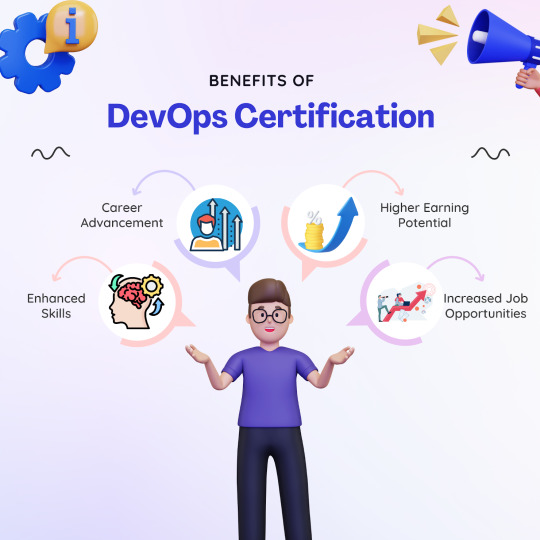
1. Enhanced Skills:
DevOps certification courses provide participants with a comprehensive understanding of DevOps principles and practices, as well as hands-on experience with relevant tools and technologies.
2. Career Advancement:
DevOps professionals are in high demand, and holding a DevOps certification can significantly enhance your career prospects. It demonstrates your commitment to continuous learning and professional development.
3. Higher Earning Potential:
According to industry reports, DevOps professionals command higher salaries compared to their non-certified counterparts. Holding a DevOps certification can help you negotiate better compensation packages.
4. Increased Job Opportunities:
Many organizations now require DevOps expertise for their software development and IT operations roles. Holding a DevOps certification can open up new job opportunities and expand your professional network.
Types of DevOps Certification Courses
There are several types of DevOps certification courses available, catering to different skill levels and career objectives:
1. Foundational Courses:
These courses provide an introduction to DevOps principles, practices, and tools. They are suitable for beginners or those looking to gain a basic understanding of DevOps concepts.
2. Practitioner Courses:
These courses are designed for professionals who already have some experience with DevOps and want to deepen their knowledge and skills. They typically cover advanced topics such as CI/CD pipelines, containerization, and infrastructure as code.
3. Specialized Courses:
These courses focus on specific aspects of DevOps, such as cloud-native DevOps, DevSecOps (integrating security into DevOps practices), or site reliability engineering (SRE). They are suitable for professionals looking to specialize in a particular area of DevOps.
4. Vendor-Specific Courses:
Some DevOps certification courses are offered by specific vendors or technology providers, such as AWS, Microsoft Azure, or Docker. These courses focus on the vendor's tools and services and are ideal for professionals working in environments that use those technologies.
Choosing the Right DevOps Certification Course
When selecting a DevOps certification course, consider the following factors:
1. Course Content:
Look for courses that cover a comprehensive range of DevOps topics, including principles, practices, methodologies, and tools. Ensure that the course aligns with your learning objectives and career goals.
2. Instructor Quality:
Check the credentials and experience of the course instructors. Ideally, they should have real-world experience working with DevOps practices and tools.
3. Hands-On Experience:
Practical experience is crucial for mastering DevOps concepts and tools. Choose courses that offer hands-on labs, projects, or simulations to reinforce your learning.
4. Certification Exam:
If certification is important to you, make sure the course includes preparation for the relevant certification exam. Look for courses that provide study materials, practice tests, and exam vouchers.
5. Flexibility:
Consider your schedule and learning preferences when choosing a course format. Options may include in-person classes, online courses, self-paced learning, or a combination of formats.
Best DevOps Certification Courses
While there are many DevOps certification courses available, some of the most popular and highly regarded ones include:
1. AWS Certified DevOps Engineer (Amazon Web Services)
2. Microsoft Certified: Azure DevOps Engineer Expert (Microsoft Azure)
3. Certified Kubernetes Administrator (CKA) (Cloud Native Computing Foundation)
4. Docker Certified Associate (Docker)
5. Certified Jenkins Engineer (CloudBees)
6. DevOps Foundation Certification (DevOps Institute)
7. Google Cloud Professional DevOps Engineer (Google Cloud)
Conclusion:
In conclusion, DevOps certification training courses offer professionals the opportunity to enhance their skills, advance their careers, and stay competitive in today's rapidly evolving tech landscape. By choosing the right course and certification path, you can acquire the knowledge and expertise needed to excel in DevOps roles and make valuable contributions to your organization's success. Whether you're just starting your DevOps journey or looking to take your skills to the next level, investing in DevOps certification training is a wise decision that can yield significant rewards in the long run.
0 notes
Text

Unleash your success with these effective strategies for passing the AZ-104 certification exam. Discover expert advice, hands-on approaches, and insightful resources for overcoming the challenges of Microsoft Azure administration. With these effective AZ-104 strategies, you can improve your skills, advance your career, and become a certified Azure administrator.
#AzureCertification#AZ104#CloudComputing#AzureAdministrator#MicrosoftAzure#CertificationTraining#CloudSkills#ITProfessionals#CareerAdvancement#CloudMastery
0 notes
Text
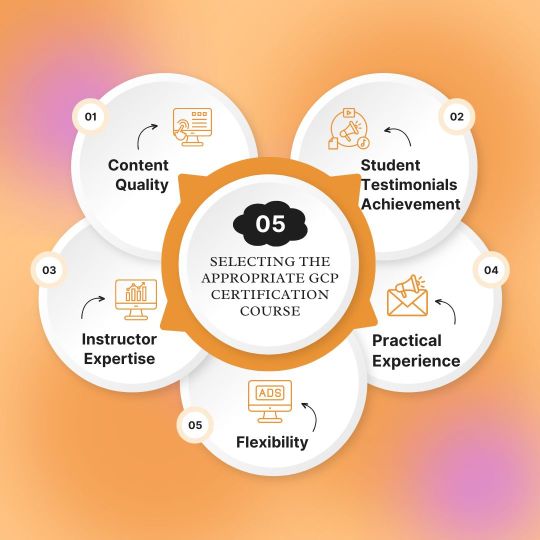
0 notes
Text
Elevate your career prospects with the Microsoft Azure Fundamentals Training in Noida at APTRON Solution in Noida. Gain the expertise and confidence to navigate the cloud landscape, contribute to organizational success, and open doors to exciting opportunities in the ever-expanding field of cloud computing. Enroll now and take the first step towards a rewarding career in the cloud.
#MicrosoftAzure#AzureFundamentals#CloudTraining#APTRONSolution#NoidaTech#CareerDevelopment#CloudComputing#CertificationTraining
0 notes